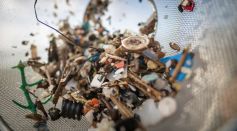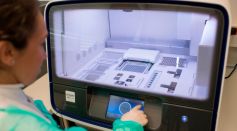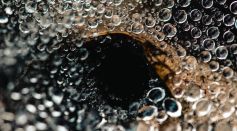Tags: Cells

Scientists Identified Key Cells for Heart's Self-Healing Mechanism: What Is Macrophage?

A Cluster of Cells in the Brainstem Discovered; A Potential Promise to Treating Blood Pressure After Blood Loss

Cells Have Octopus-Like Tentacles Helping Them Move Around and Inhibiting Them Could Probably Stop Cancer From Spreading, Study Claims

Diagnostic, Treatment Strategy for Cancers Study How Stabilizing Chromosomes Help in Dealing with Tumors

Lab-Grown Meat Requires Real Cow Fetus Blood, Too Expensive to Develop

Nano-Sized Plastics Penetrate, Permeate Human Cell Membranes

Salk Scientists Engineered Ultrasound-Activated Mammalian Cells, Study Says

New Method for ‘Pyroptosis’ Shows How to Regulate Cellular Death Process That Usually Leads to Infections

Cells in Down Syndrome Cases Have Senescence-Like Mechanism That Could Be Targeted for Future Treatment

Human Lung Immune Cells Originate in the Liver Then Move Up Via Bloodstream, Study Says

Atlas of Cranial Stem Cells May Give Insights to Normal Head Development, Craniofacial Birth Defects

Epilepsy Seizures Treatment Can Be Cured by Pig Brain Transplants Using Cronutt Sea Lion Model

Eating Process of Cells Observed for the First Time; Vesicles and Other Functions Proven Through High-Definition Imaging

New Vaccine May Reduce Zombie Cells That Cause Aging-Related Diseases, Prolong Life

Novel Approach on Imaging by Combining Two Distinct Microscopy Technology Cells Show How Cells Work

World's Thinnest X-Ray Detector With High Sensitivity, Rapid Response Time Could Lead to Real-Time Imaging Someday

Bacteria Has the Ability to Survive Antibiotics Through Liquid Protein Droplets; Molecular Production Due to Stress
Dinosaur Cloning Might Become Possible: First Healthy Prehistoric DNA Was Found in a Perfectly Preserved Fossil in China

Genes in Liver Cells Discovered to Mutate During Lifetime; Could Lead to Chronic Liver Disease, Obesity, and Sugar-Related Problems
Descendants of Henrietta Lacks Sued Biotechnology Company for Using HeLa Cells Without Consent
Most Popular

Ancient Hotspot Found to Have Created Great Lakes 300 Million Years Ago

Mysterious Structures Discovered Beneath the Pacific Ocean, Puzzle Scientists

Health Benefits of Drinking Hot Chocolate

Largest Known Volcanic Aquifer Discovered Beneath Oregon's Cascades





